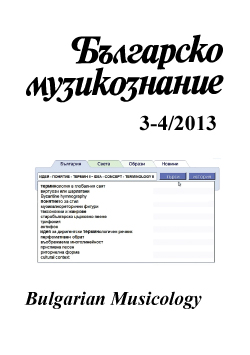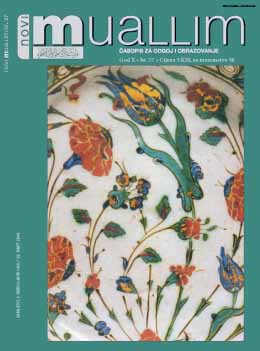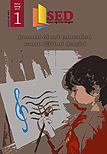
Музиката на Димитър Христов като сугестивна „въображаема многолинейност“: пространство от структурирани и разгърнати звукови архетипи
This article is dedicated to Dimiter Christoff ’s 80th anniversary (born October 2, 1933). The present text examines some substantial problems of his musical language, which are related to the concept of new sound sensuousness, introduced in my previous publications. Analyzing his individual works, the following observations can be derived as a common creative principle: while constructing the form, the composer is using “empty spaces” – a forth, a fifth, or an octave, which outline the graphic contour of a sound space. Afterwards the sound space is gradually filled (step-by-step) with tone rows – halftone and whole-tone, ascending and descending patterns, in different combinations. The patterns are derived from archaic layers typical for the Bulgarian folklore – Shoppe diaphony. These tone rows have immense potential and different ways of manifestation, while each combination is unique. Beside in a melodic line, the tone rows can be organized in a distance. As a result, the sound space is organized not by tonal combinations, but rather by “imaginary” multi-linear combinations of movements and mobile cell structures through which the energy is retained, stretched, and/ or shrunk. Thus, an original “imaginary multi-linearity” is constructed, which is “unreal”, “imitative” and has a strong suggestive impact.
More...


